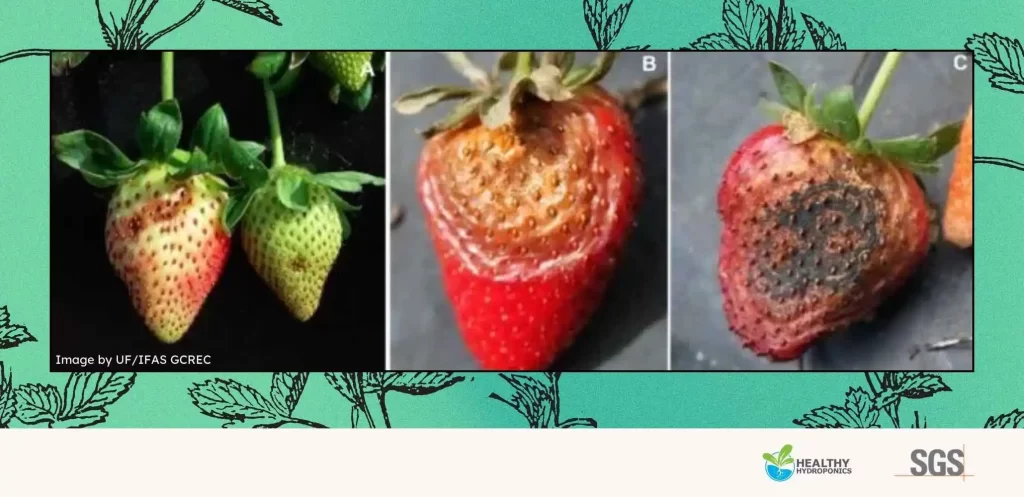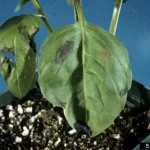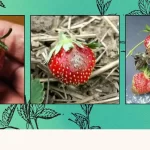Pathogen Profile: Neopestalotiopsis
Introduction
Neopestalotiopsis is a significant fungal pathogen threatening strawberry growers globally, including indoor cultivators. This aggressive fungus damages various plant parts and has evolved to become more virulent, posing serious risks to production. Recent reports highlight its presence in indoor growers in Quebec and the Northeastern United States.
Neopestalotiopsis is a genus of fungi within the Pestalotiopsidaceae family, and it was initially named Pestalotia. It includes multiple species known to cause plant diseases, especially in tropical and subtropical crops like strawberries.
The economic impact of Neopestalotiopsis is severe. In Florida, for instance, the pathogen has caused significant yield losses in strawberry fields, with entire fields sometimes rendered uneconomical to harvest. The rapid spread of this disease has led to increased production costs and reduced crop quality, affecting growers’ profitability across multiple regions.
We provide great overviews of many agricultural microorganisms. Subscribe to stay updated!
Symptoms
In indoor strawberry production, Neopestalotiopsis can manifest in several ways.
Leaf Symptoms:
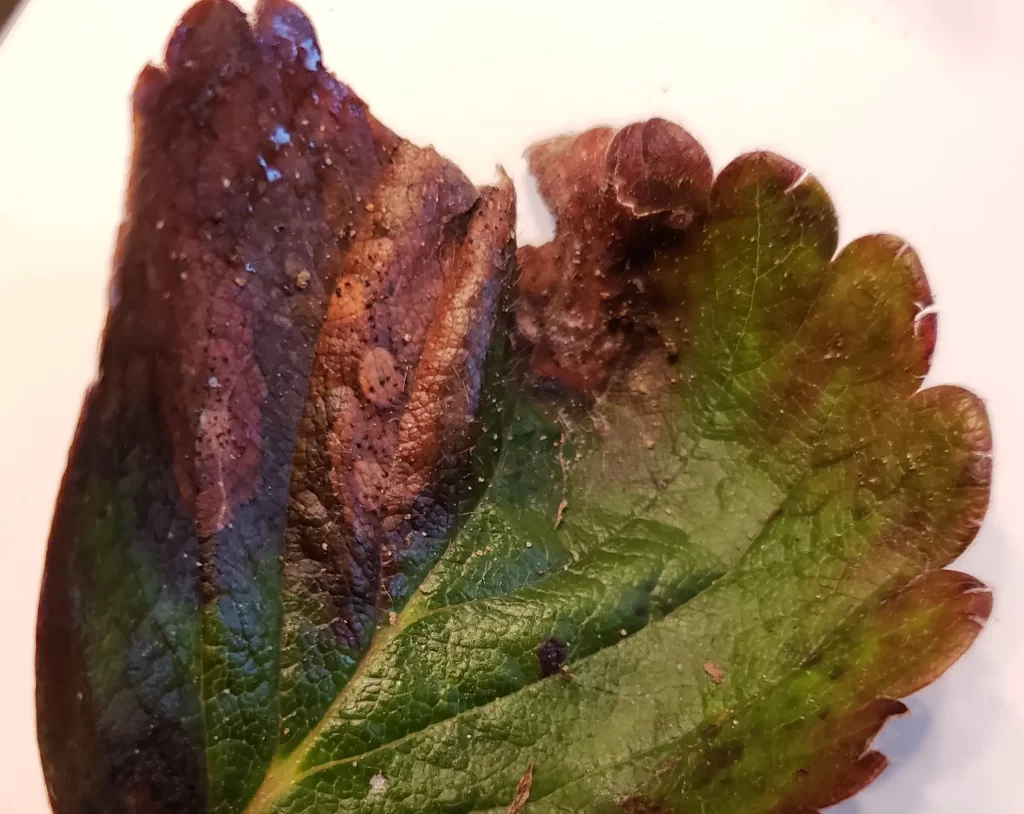
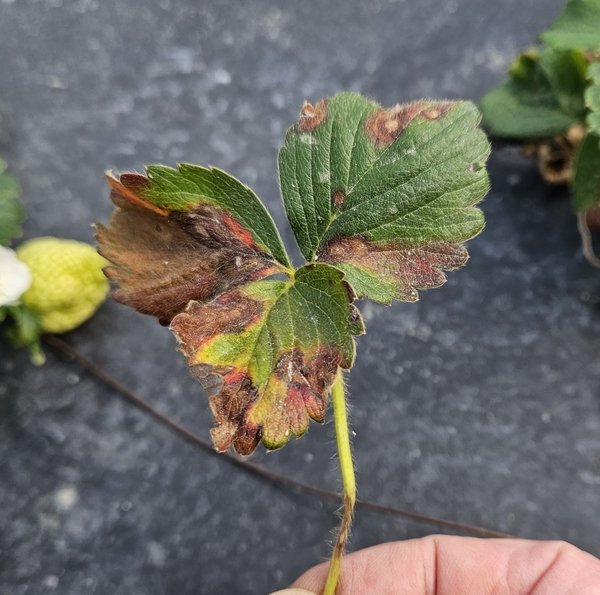
Fruit Symptoms:
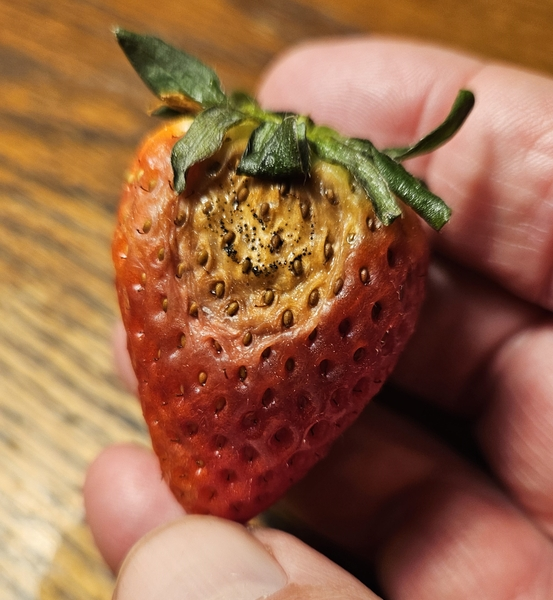
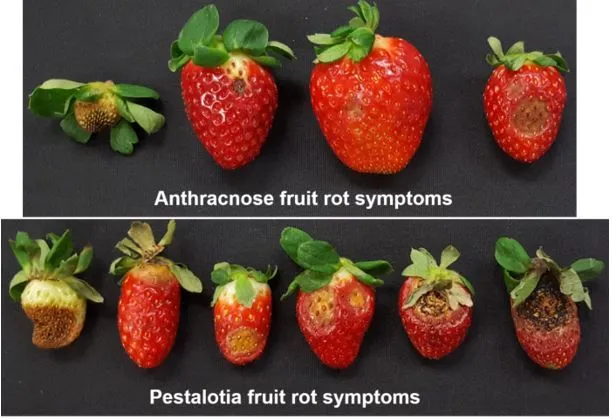
Crown Symptoms:
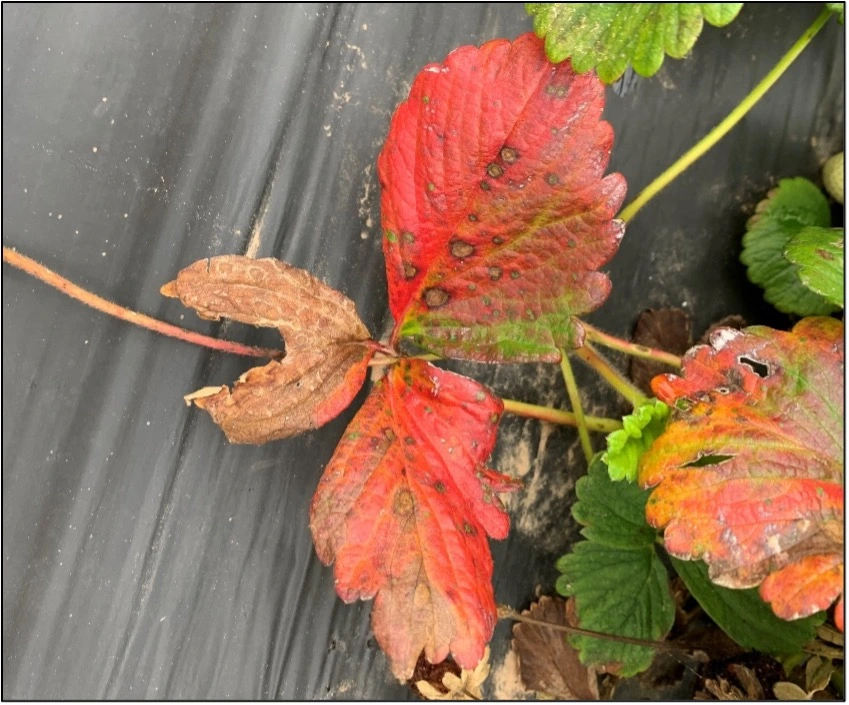
It’s important to note that early symptoms of Neopestalotiopsis crown infections can be difficult to distinguish from other crown rot diseases, necessitating laboratory confirmation for accurate diagnosis.
Life Cycle and Infection Stages
While the complete life cycle of Neopestalotiopsis in indoor environments is not fully understood, research has provided some insights:
- Survival: The pathogen can survive in growing media and on some asymptomatic plants.
- Spread: In indoor environments, irrigation water is a carrier for fungal spores. The movement of workers and equipment can also contribute to the spread.
- Infection: The fungus enters the plant through wounds or natural openings, with moisture playing a crucial role in infection.
- Colonization: Once inside the plant, the pathogen colonizes tissue, developing symptoms.
- Reproduction: Under favorable conditions, the fungus produces spores on infected plant parts, ready to start the cycle anew.
Growth Conditions
In indoor strawberry production, Neopestalotiopsis thrives under specific environmental conditions:
- Temperature: The optimal temperature for disease development is around 68°F (20°C), although symptoms can appear at temperatures as low as 41°F (5°C).
- Humidity: High humidity and leaf wetness are critical for spore germination and infection. As little as 48 hours of leaf wetness can lead to infection, even at lower temperatures.
- Irrigation: Overhead irrigation or misting systems can create conditions favorable for disease spread and development.
Methods of Prevention and Control
For indoor strawberry growers, effective management of Neopestalotiopsis requires an integrated approach:
- Clean Plant Material: Start with pathogen-free transplants, as infected planting stock is a primary introduction source.
- Sanitation: Maintain strict hygiene practices in the growing environment, including regularly cleaning tools and equipment.
- Environmental Management: Control humidity levels and minimize leaf wetness periods. Consider using drip irrigation instead of overhead systems.
- Monitoring: Regularly inspect plants for early signs of infection, immediately removing and destroying any suspicious plants.
- Cultural Practices: Implement proper spacing and pruning techniques to improve air circulation and reduce humidity around plants.
Neopestalotiopsis in strawberries is often confused with several other pathogens that cause similar symptoms, such as:
- Botrytis cinerea (Gray Mold): Causes fruit rot and leaf lesions, similar to Neopestalotiopsis fruit infections.
- Colletotrichum spp. (Anthracnose): Leads to fruit rot and crown lesions, which can be mistaken for Neopestalotiopsis symptoms.
- Phytophthora cactorum (Crown Rot): Causes wilting and crown discoloration, making early diagnosis challenging.
- Fusarium oxysporum: Also results in crown rot and plant decline, similar to Neopestalotiopsis crown infections.
Conclusion
Neopestalotiopsis presents a significant challenge for indoor strawberry growers, but its impact can be mitigated with vigilance and proper management techniques. By understanding the pathogen’s behavior in controlled environments, recognizing symptoms early, and implementing an integrated pest management approach, growers can protect their crops and maintain productivity. As research continues, new tools and strategies for combating this pathogen in indoor settings will likely emerge, offering hope for more effective control.
Banner image by Baggio, J. S., Forcelini, B. B., Wang, N.-Y., Ruschel, R. G., Mertely, J. C., & Peres, N. A. (2021). https://doi.org/10.1094/PDIS-06-20-1290-RE
Must Read:
Baggio, J. S., Forcelini, B. B., Wang, N.-Y., Ruschel, R. G., Mertely, J. C., & Peres, N. A. (2021). Outbreak of leaf spot and fruit rot outbreak in Florida strawberry caused by Neopestalotiopsis spp. Plant Disease, 105(5), 1290-1296. https://doi.org/10.1094/PDIS-06-20-1290-RE
Cato, A. (2024, August 30). Neopestalotiopsis in strawberry, aka. Pestalotia leaf spot and fruit rot. University of Arkansas Division of Agriculture Cooperative Extension Service. https://www.uaex.uada.edu/farm-ranch/crops-commercial-horticulture/horticulture/ar-fruit-veg-nut-update-blog/posts/neop-strawberry.aspx
Cline, B. (2024, August). Best management practices for Neopestalotiopsis. North Carolina State University Cooperative Extension. https://strawberries.ces.ncsu.edu/2024/08/best-management-practices-for-Neopestalotiopsis/
Cline, B., Moparthi, S., & Hoffmann, M. (2024, August 5). Neopestalotiopsis leaf, fruit, and crown rot of strawberry. North Carolina State University Cooperative Extension. https://content.ces.ncsu.edu/Neopestalotiopsis-leaf-fruit-and-crown-rot-of-strawberry
van der Goes, P. (2024, September 24). Neopestalotiopsis is manageable, provided we take the right measures. HortiDaily. https://www.hortidaily.com/article/9660672/Neopestalotiopsis-is-manageable-provided-we-take-the-right-measures/
Wahle, E., & Aly, B. (2024, September 27). Neopestalotiopsis in strawberry. University of Illinois Extension. https://extension.illinois.edu/blogs/commercial-fruit-and-vegetable-growers/2024-09-27-Neopestalotiopsis-strawberry
![]()
David Santos is the CMO of Healthy Hydroponics InnoTech


